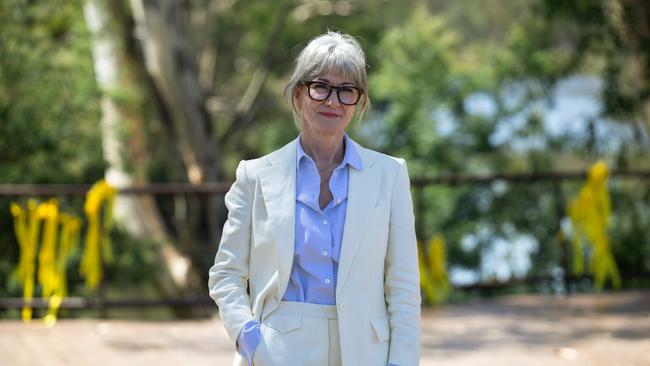Snap carves its own path away from ‘social media’ category
US-based creative advertising industry legend Colleen DeCourcy reveals her vision for social media platform Snap and the future of marketing.

Social media company Snap is making bold creative moves as part of a long-term plan to differentiate itself from other social behemoth channels.
As of around a month ago, when the company launched a global advertising campaign “Less social media. More Snapchat”, that mission was ramped up with considerable creative heft, as the company looks to carve its own image and path, distanced from the “social media” category.
It comes as last quarter the company recorded revenue of USD $1.36bn, representing a 5 per cent increase year-on-year. The company says it is still focused on its advertising business, including “direct response” (shoppable) advertisements.
The first half of its new ad spot takes viewers on a visual whistle stop tour of some of the most polarising and negative corners of digital and social media.
Snap’s advertisement compares more ‘Likes’ with less ‘Love’, and alludes to problems with societal division and disinformation, comparing more ‘Chaos’ with less ‘Truth’. About halfway through the advert comes the plot twist; the campaign then flips to the more “happy” and “connected” moments that it says more than 90 per cent of its 800 million monthly active users globally experience (there are eight million users in Australia).
Leading the creative charge within the company is industry legend Colleen DeCourcy, who came out of retirement to take on the role in 2022. The move followed her long and illustrious career in top creative and digital roles at esteemed advertising agencies Wieden+Kennedy and TBWA, as well as the helm of her own social media-focused company.
Ms DeCourcy, Snap’s chief creative officer, has also recently inherited the chief marketing officer role at Snap, previously occupied by Kenny Mitchell, who departed the business for Levi Strauss & Co in June last year.
Repositioning Snap as a social media antidote was always part of Ms DeCourcy’s plan. She is navigating her role at Snap from a rare perspective, having held creative leadership roles in the industry as social media has matured over the past two decades.
Speaking to The Growth Agenda during a recent visit to Melbourne from the US, Ms DeCourcy’s disheartenment with the evolution of the broader social media landscape was clear.
“By the time I was leaving Wieden [and Kennedy], I was feeling pretty cynical about where we’d ended up on this journey, because it started out with such incredible promise,” she said.
“The time that I have traversed is very much from the beginning to now and I have seen us, I think, fall off track. And I don’t think it’s because anybody intended to. There are a million global market influences that have led us here.”
As Snap’s new advertising campaign suggests, “here” can be a divisive place. Snap’s advert appears to invite audiences to choose how they would like to proceed.
Snap, by design, is different to other channels in a few ways; when users open the app, the landing function is a camera lens rather than a feed of content, for example. It’s a sign of the authentic self-expression that the channel promotes.
“I think we have reached this moral fork in the road, where you can design only for revenue and growth, or you can design for a sustained healthy environment over time,” Ms DeCourcy said. She added that Snap has always chosen the latter path for growth.
“It’s important that we balance what the value of these businesses are, against what the values of these businesses are and what value they bring to the audiences that they aggregate. Otherwise, we’re kind of fracking our own community. And I think that’s not healthy, nor is it healthy for business,” she added.
Ms DeCourcy said Snap’s marketing spend was not being decreased, but how the budget was allocated was shifting. Marketing, she says, infuses many parts of the business.
“It’s product design. It’s who you partner with. It’s how you make decisions at the company. It’s thought leadership. It’s a lot of different things,” she said.
The global marketing landscape is fraught, as budgets tighten and teams become smaller. In times of such intense pressure, Ms DeCourcy offers sage advice.
“I don’t think there’s any room for bog standard marketing work anymore, or for mediocre ideas that fill media space. There’s no such thing as buying ‘share of mind’ anymore. You can’t spend enough. And so you’ve got to come out with excellence,” she said.
She also said she thought brands needed to bring some amount of “provocation” in their creative outputs.
That doesn’t mean “punching”, she caveated: “Provocation takes many forms. But I think if there’s none built in there, I don’t know how you’re getting a conversation going anymore.”
In the fragmented media age, creativity endures, DeCourcy said.
“I have a fundamental belief about creativity is that it’s kind of like gravity, or chemistry. What you use to do it, does not define it. The creative act, I don’t think has changed in millennia,” she said.
But for all Ms DeCourcy’s optimism about creativity, other forces are shaping its current form in business circles. “I am a little bit worried about the state of having really unique ideas. I think that people are under a lot of pressure, and that we have so many data points,” she said.
She is also concerned that as budgets are carved into more pieces than ever before, the quest for efficiency and effectiveness could stifle change-making creativity.
“I think risk taking is at an all time low … And I worry that CMOs and CCOs are so afraid of not moving at the speed that technology wants us all to move. [And] that we’re getting a little bit repetitive in our ideas and our thinking.”
However, to CEOs and marketing chiefs that are happy with resting on their creative laurels and sticking to what’s tried and tested, even if their balance sheet looks healthy, DeCourcy responds: “To that I’d say, let’s talk in two years. Because how long can you not do anything?
“The world more than ever feeds off of new news, progress, narrative stories. If you’re not saying anything, what, do you run it on performance marketing?
“What happens when you stop spending? Like, if you’re just fine, that’s great. But I hope the next guy endeavours to be more than just fine.”




